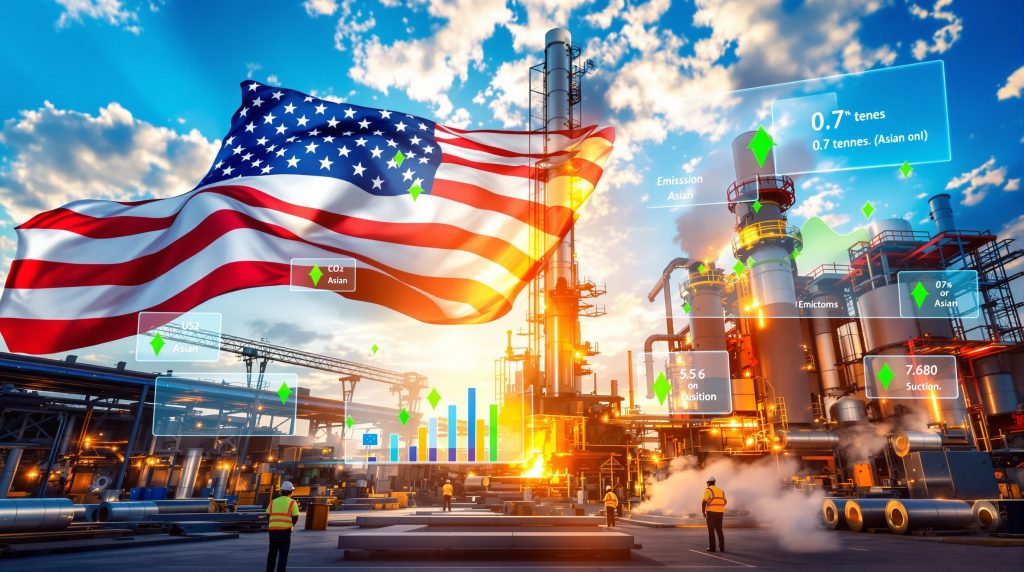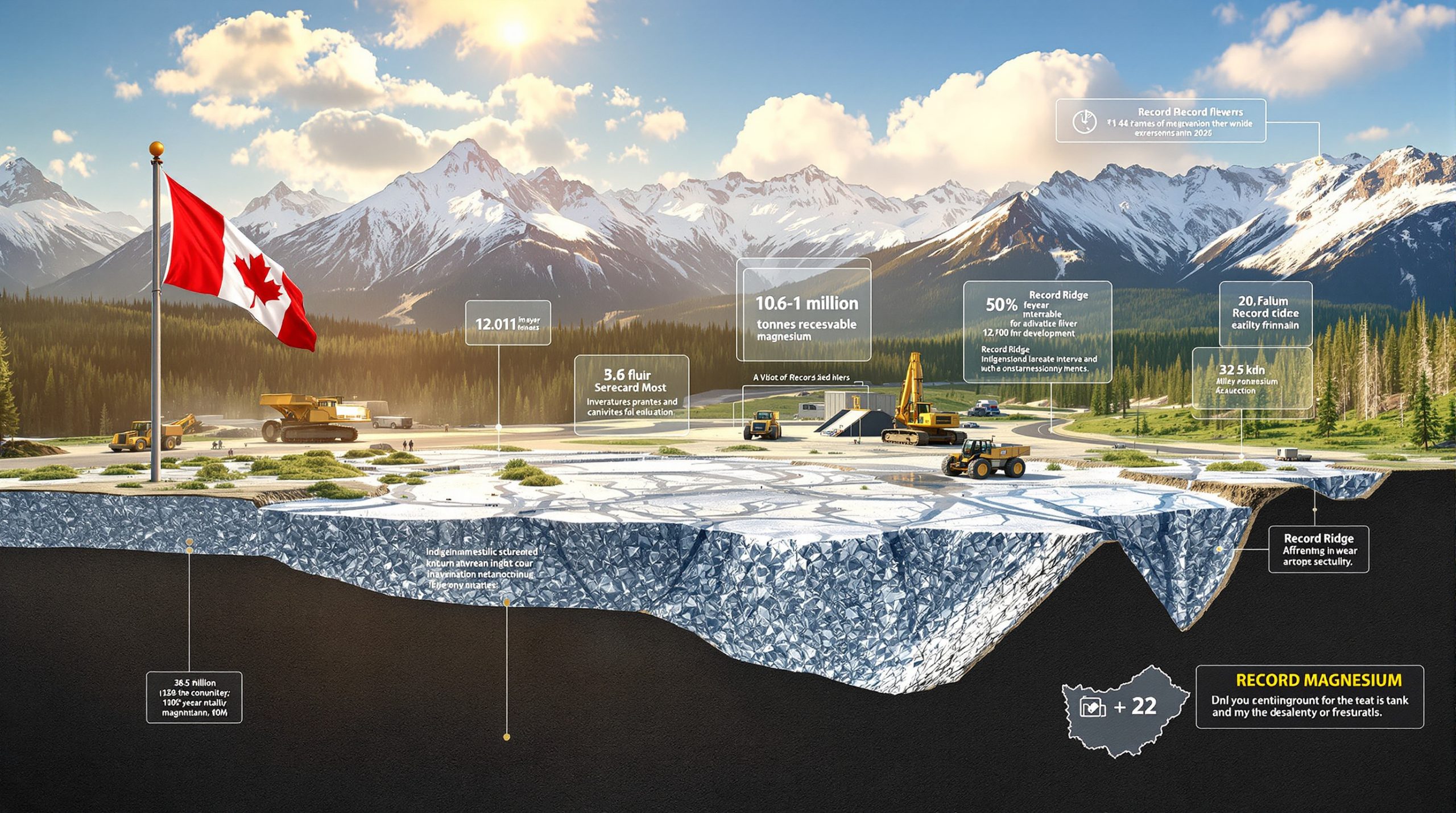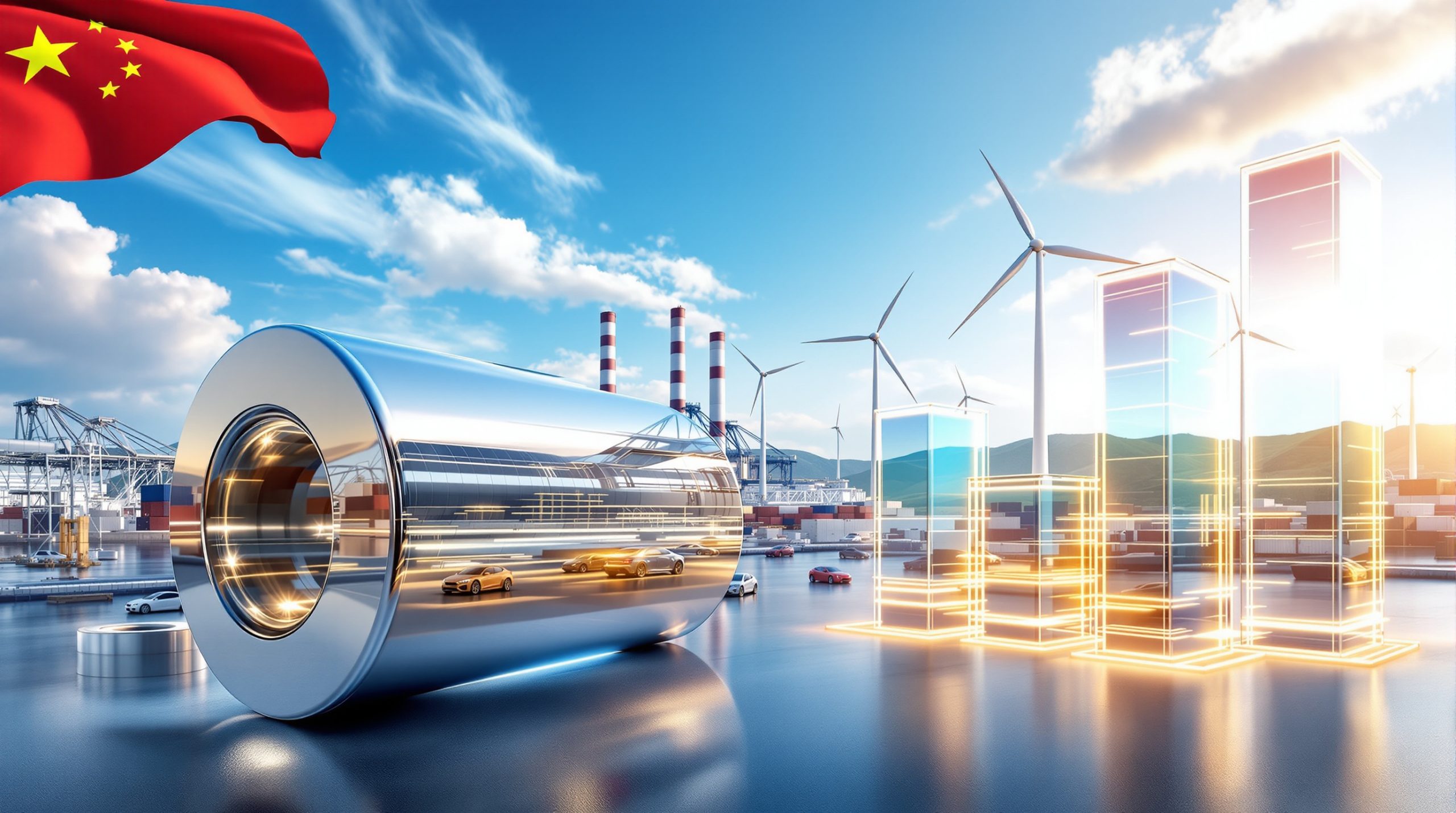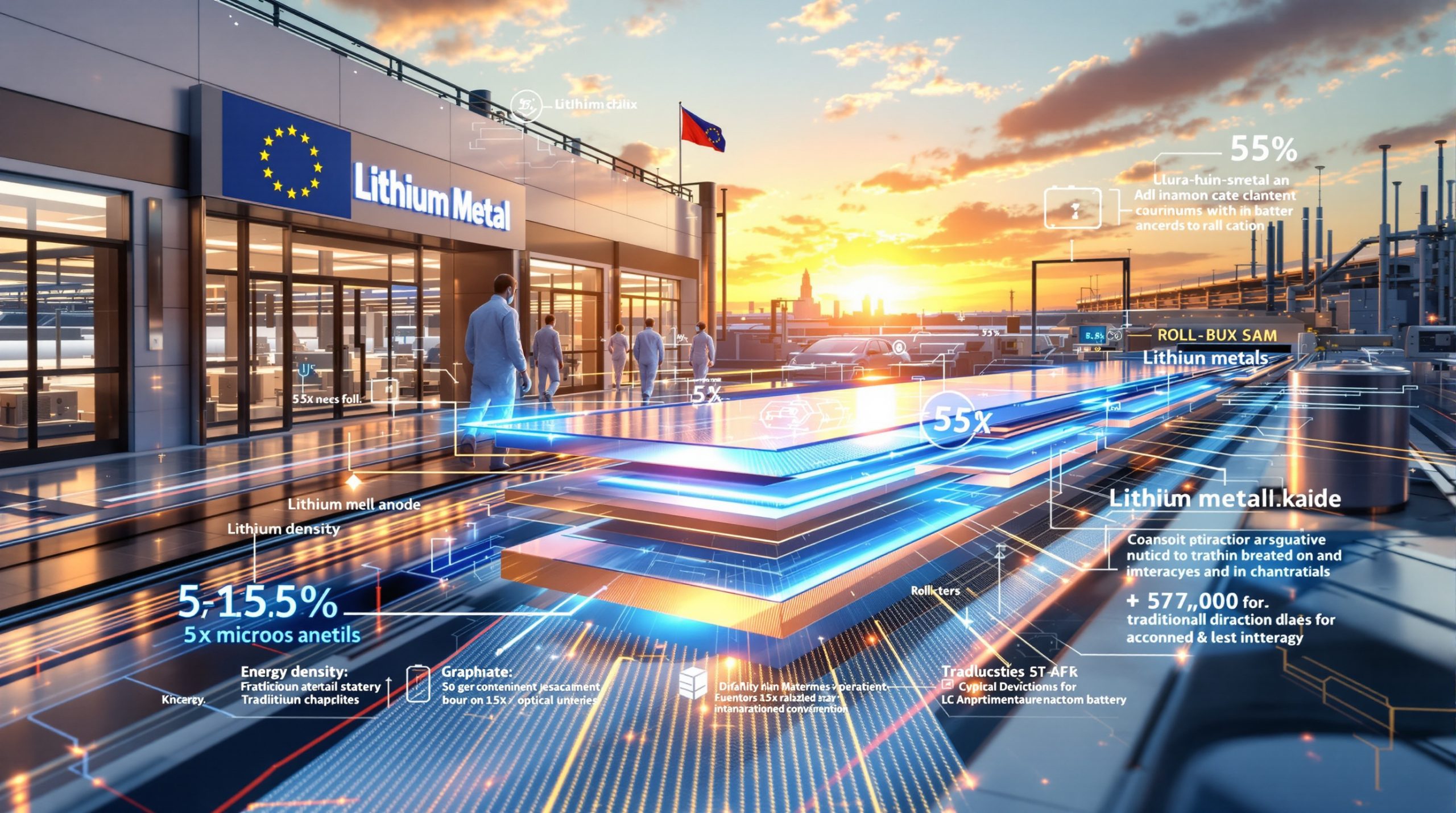How Clean Is American Steel Production Compared to Global Standards?
The American steel industry demonstrates exceptional environmental performance that surpasses international competitors by significant margins. Domestic producers achieve carbon efficiency rates that are 75-320% better than global averages, positioning the United States as a world leader in clean steel production through decades of strategic electric arc furnace (EAF) investments and technological modernisation. Furthermore, the green steel premium in the US remains a complex market dynamic influenced by these superior environmental standards.
Current Emissions Performance Benchmarks
The carbon intensity thresholds established by Fastmarkets reveal stark regional differences in environmental standards:
| Region | Carbon Threshold | Scope Coverage |
|---|---|---|
| United States | 0.7 tonnes CO2/tonne steel | Scope 1, 2, and 3 emissions |
| Northern Europe | 0.8 tonnes CO2/tonne steel | Scope 1, 2, and 3 emissions |
| Asia | 1.3 tonnes CO2/tonne steel | Scope 1, 2, and 3 emissions |
These comprehensive measurements encompass direct emissions from furnace operations, indirect emissions from purchased electricity, and upstream plus downstream supply chain emissions. The American threshold represents the most stringent environmental criteria globally, reflecting the advanced state of domestic steel production technology.
EAF Technology Advantage
Electric arc furnace production generates emissions ranging from 0.39 to 1.91 tonnes CO2 per tonne of steel, with variability dependent on electricity source composition and operational efficiency. Many American facilities already meet stringent environmental criteria without requiring additional process modifications, creating a unique market position where standard production exceeds international green steel thresholds.
The Steel Manufacturers Association emphasises that American steelmakers have achieved superior carbon efficiency through historical infrastructure investments. This technological foundation enables domestic producers to manufacture compliant steel as standard output rather than premium differentiated products.
The fundamental market challenge emerges from this environmental leadership: buyers question premium pricing for steel that already satisfies their sustainability requirements through existing EAF production methods.
Comprehensive Emissions Accounting
The regional carbon thresholds incorporate three distinct emission categories:
• Scope 1 Emissions: Direct furnace operation outputs
• Scope 2 Emissions: Purchased electricity consumption impacts
• Scope 3 Emissions: Complete supply chain environmental footprint
This methodology explains why American standards (0.7 tonnes) achieve greater environmental stringency compared to European (0.8 tonnes) or Asian (1.3 tonnes) benchmarks, reflecting comprehensive lifecycle assessments rather than production-only measurements.
What Political Factors Could Accelerate Green Steel Premium Adoption?
Critical Update: As of October 30, 2025, Donald Trump serves as the sitting US President following his 2024 election victory. The speculative Democratic administration scenarios discussed in market analysis from September 2024 are now historically invalidated.
Federal Procurement Mechanisms
The Buy Clean initiative represents a potential catalyst for premium acceptance despite current buyer resistance. Federal purchasing requirements could establish baseline demand for lower-carbon steel inputs through government infrastructure contracts, creating guaranteed market segments willing to pay premiums for regulatory compliance.
Policy Implementation Framework:
• Enhanced sustainability reporting requirements for federal contractors
• Minimum environmental standards for government-funded infrastructure
• Alignment with international decarbonisation commitments
• Automotive sector pressure transmission through export requirements
Congressional initiatives like the PROVE IT Act indicate movement toward carbon monitoring and potential border adjustment mechanisms. Such measures could benefit domestic producers by protecting clean production advantages and levelling competitive playing fields against higher-emission international competitors.
Carbon Border Adjustment Potential
Border adjustment mechanisms similar to the European Union's Carbon Border Adjustment Mechanism could significantly reshape competitive dynamics. Survey data reveals over half of respondents favour carbon taxes on steel imports, recognising that American steel's environmental leadership would benefit from import restrictions on higher-emission foreign production.
However, some market participants express concern about raw material cost increases, as carbon taxes would affect steelmaking inputs imported for domestic end use, potentially increasing overall production expenses. Additionally, US tariffs impact could influence these market dynamics significantly.
How Could Republican Leadership Affect Green Steel Development?
With Donald Trump's return to the presidency in January 2025, Republican administration priorities emphasising economic competitiveness over environmental mandates have become operationally relevant for green steel premium development. Consequently, global trade impacts will likely influence the overall market landscape.
Regulatory Environment Shifts
Republican leadership typically focuses on traditional cost competitiveness rather than sustainability mandates, potentially slowing premium adoption through several mechanisms:
• Reduced federal sustainability requirements for government procurement
• Limited clean technology incentives for steel industry investments
• Withdrawal from international climate commitments following historical precedent
• Emphasis on domestic production costs over environmental differentiation
The administration's approach reflects historical patterns established during Trump's first presidency (2017-2021), when the United States withdrew from the Paris Climate Agreement, signalling deprioritisation of international environmental frameworks.
Foreign Investment Implications
Political opposition to strategic acquisitions significantly impacts decarbonisation technology transfer. Trump's stated intention to "instantaneously block" the proposed $14 billion Nippon Steel takeover of U.S. Steel prevents access to advanced hydrogen-based steelmaking technologies and carbon capture integration systems.
Technology Transfer Constraints:
-
Hydrogen-based steelmaking pilots developed by Japanese steelmakers
-
Carbon capture integration systems for emission reduction
-
Advanced operational methodologies for decarbonisation pathways
-
30% emission reduction targets by 2030 implementation strategies
This technology isolation could constrain innovation pace in American decarbonisation efforts, limiting competitive advantages that might otherwise support premium pricing justification.
Why Do US Buyers Resist Green Steel Premiums?
Market resistance stems from fundamental value proposition challenges where buyers question additional costs for steel that already meets environmental requirements through standard EAF production methods. However, the green steel premium in the US faces unique challenges compared to other markets.
Value Perception Challenges
Survey Timeline Expectations (September 2024):
| Premium Collection Timeline | Respondent Percentage |
|---|---|
| Less than 12 months | 15% |
| 12-18 months | 20% |
| More than 18 months | 48% |
| Uncertain/No response | 17% |
Nearly half of survey participants anticipate extended development periods exceeding 18 months for meaningful premium establishment, reflecting deep-seated buyer scepticism about paying additional costs for existing environmental performance.
Market Differentiation Absence
The fundamental resistance emerges from product similarity: standard EAF-produced steel already satisfies buyer environmental criteria without premium pricing. Market participants describe this dynamic as purchasing identical products at higher costs without receiving additional value or performance benefits.
Core Resistance Factors:
• No perceived product differentiation between standard and premium steel
• Existing clean production standards meeting buyer requirements
• Cost-conscious procurement practices prioritising price competitiveness
• Limited consumer demand transmission from end-user markets
Industry Positioning Challenges
American steel producers argue they have already achieved environmental leadership through historical EAF investments, questioning why buyers should compensate for baseline performance. This positioning creates market confusion about premium justification when standard production exceeds international green steel thresholds.
The American Iron and Steel Institute captures this sentiment: American steel production ranks as the cleanest and most energy-efficient among the seven largest steel-producing countries globally.
What Role Does Automotive Demand Play in Premium Development?
The automotive industry represents the most promising avenue for green steel premium acceptance due to favourable economic dynamics and sustainability positioning requirements. Furthermore, industry evolution trends are shaping demand patterns in this sector.
Sector-Specific Economic Advantages
Automotive Premium Economics:
• Average vehicle price: $45,000
• Steel content per vehicle: ~1 tonne
• Potential green steel premium: ~$150 per vehicle
• Premium as percentage of vehicle cost: ~0.33%
This minimal cost impact enables premium absorption without significant consumer price sensitivity, while providing substantial value to steel producers supplying automotive manufacturers.
Export Market Requirements
Automobiles represent America's second-largest export category after energy products, creating indirect pressure for supply chain sustainability compliance. Automakers serving international markets face increasing requirements to demonstrate environmental responsibility throughout their supply chains, generating upstream demand for verified low-carbon steel inputs.
Supply Chain Integration Drivers:
-
International market access requirements for exported vehicles
-
Brand sustainability positioning in competitive automotive segments
-
Regulatory compliance in target export markets
-
Consumer perception management for environmentally conscious buyers
Downstream Pressure Transmission
Consumer-driven brand perception could generate upstream pressure from steel buyers to producers, reversing traditional supply-push premium models. This approach requires significant consumer education and awareness development to create meaningful market demand for sustainability-differentiated automotive products.
How Do Global Standards Influence US Market Development?
The absence of universal green steel definitions creates market confusion and pricing difficulties across regional markets, with producer-specific interpretations varying significantly. In addition, iron ore price trends influence the broader steel market dynamics.
Definition Standardisation Challenges
Producer-Specific Green Steel Definitions:
• SSAB: Zero fossil fuel emissions with recycled content requirements
• Nippon Steel: 30% emission reduction pathway toward carbon neutrality by 2050
• Cleveland-Cliffs: Broader "clean steel" encompassing recycled materials and lower emissions profiles
These definitional variations prevent standardised pricing mechanisms and create buyer confusion about product specifications and environmental performance criteria.
International Competitive Dynamics
American producers face minimal export pressure, with approximately 10% of production destined for international markets compared to other commodity sectors. This reduced export exposure diminishes urgency for global standard compliance, allowing domestic focus on cost competitiveness over international environmental alignment.
However, indirect exposure through automotive and other export-oriented customers maintains some alignment pressure, creating complex market dynamics where domestic standards must consider international requirements without direct regulatory mandate.
Regional Premium Disparities
Current Global Green Steel Premium Assessments:
| Market | Premium Range | Assessment Method |
|---|---|---|
| United States | $0 per short ton | Differential to US HRC |
| Northern Europe | €100-200 per tonne | Differential to HRC index |
| Vietnam (Import) | $102-206 per tonne | Differential to HRC index |
These disparities reflect different regulatory environments, buyer sophistication levels, and competitive market dynamics across regions.
What Market Mechanisms Could Enable Premium Collection?
Premium justification will likely emerge through market differentiation strategies rather than product superiority, enabling producers and large consumers to demonstrate sustainability commitments to end customers. Moreover, the green steel premium in the US will require innovative approaches to market development.
Brand Differentiation Strategies
Market differentiation provides the most viable pathway for premium collection, allowing companies to showcase environmental responsibility without requiring fundamental product changes. This approach targets consumer perception and brand positioning rather than technical performance improvements.
Differentiation Implementation:
-
Sustainability marketing campaigns highlighting environmental leadership
-
Supply chain transparency initiatives documenting carbon footprint reductions
-
Third-party certification programs validating environmental claims
-
Consumer education efforts explaining green steel benefits
For instance, the US green steel market's evolution demonstrates how policy and pricing mechanisms are shaping market dynamics.
Upstream Demand Creation
Consumer-driven demand represents the most sustainable mechanism for premium establishment, creating natural market forces that support price differentiation. This approach requires extensive consumer awareness development and brand positioning to generate meaningful purchasing preferences.
Demand Creation Framework:
• End-user education about steel environmental impact
• Brand association between sustainability and product quality
• Purchasing preference development among environmentally conscious consumers
• Retailer partnership for sustainability messaging
How Do Current Green Steel Prices Compare Globally?
Regional premium collection mechanisms demonstrate established market acceptance in European and Asian markets while American development remains stagnant. Additionally, green steel economics play a crucial role in determining market viability.
Regional Premium Analysis
Latest Market Premium Assessments:
United States:
- Premium: $0 per short ton
- Assessment: Differential to US hot-rolled coil (HRC)
- Market Status: No premium collection established
Northern Europe:
- Premium: €100-200 per tonne
- Assessment: Differential to HRC index
- Market Status: Established premium collection mechanism
Asia (Vietnam Import):
- Premium: $102-206 per tonne
- Assessment: Differential to HRC index
- Market Status: Active premium trading
Price Development Trajectories
European and Asian markets demonstrate functional premium collection systems supported by regulatory frameworks and buyer acceptance, while American market development lags significantly due to buyer resistance and regulatory uncertainty.
Market Development Factors:
• Regulatory environment maturity driving buyer compliance requirements
• Consumer awareness levels supporting premium acceptance
• Supply chain integration enabling cost transmission
• International trade pressure requiring environmental compliance
What Technological Factors Could Influence Premium Timing?
Technological developments in carbon reduction methods and emission threshold evolution could significantly affect American producer positioning and premium justification capabilities. Notably, electrification & decarbonisation efforts across the mining sector are influencing steel production methods.
Carbon Threshold Evolution
Potential changes to green steel emission thresholds could affect competitive positioning among American producers. Lower emission requirements might increase production costs while strengthening premium justification arguments by creating meaningful differentiation between standard and advanced production methods.
Threshold Impact Scenarios:
-
Stricter emission limits requiring additional technology investments
-
Enhanced measurement methodologies capturing previously excluded emission sources
-
Lifecycle assessment expansion including transportation and raw material impacts
-
Renewable energy requirements for electricity-intensive EAF operations
Innovation Investment Drivers
Carbon border tariffs or enhanced environmental standards could stimulate technological innovation investments, creating competitive advantages that support premium pricing strategies through genuine product differentiation.
Innovation Acceleration Mechanisms:
• Hydrogen-based steelmaking technology development for zero-carbon production
• Carbon capture and utilisation systems for emission elimination
• Advanced recycling technologies for higher-quality feedstock utilisation
• Renewable energy integration for grid-independent operations
When Will US Green Steel Premiums Become Viable?
Premium viability depends on multiple converging factors that must align to overcome current market resistance and establish sustainable pricing mechanisms. Ultimately, the green steel premium in the US requires a coordinated approach addressing regulatory, technological, and market challenges.
Market Readiness Indicators
Critical Convergence Factors:
• Regulatory framework development creating compliance requirements
• Consumer demand evolution generating purchasing preferences
• Global standard harmonisation reducing definitional confusion
• Political stability and policy continuity supporting long-term investment decisions
Industry Transformation Timeline
Market participants maintain conservative expectations about premium development speed, with survey data revealing significant scepticism about near-term adoption. This outlook reflects entrenched buyer resistance, regulatory uncertainty, and fundamental questions about value proposition justification.
Timeline Assessment Factors:
-
Buyer education requirements for premium acceptance
-
Regulatory implementation periods for new standards
-
Technology development timelines for enhanced differentiation
-
Consumer awareness building for downstream demand creation
The American green steel premium landscape remains in developmental stages, with political, technological, and market forces creating complex dynamics that will ultimately determine adoption speed and pricing sustainability. Current analysis suggests extended development periods as the industry navigates buyer resistance, regulatory uncertainty, and fundamental questions about value proposition justification in a market where standard production already exceeds international environmental benchmarks.
Disclaimer: This analysis incorporates market assessments and forecasts that involve uncertainty and speculation. Steel pricing, regulatory developments, and political outcomes can change rapidly, affecting premium collection timelines and market dynamics. Investors and industry participants should conduct independent research and consider multiple scenarios when making strategic decisions regarding green steel premium development.
Looking for Investment Opportunities in Clean Steel Production?
Discovery Alert's proprietary Discovery IQ model delivers real-time alerts on significant mining discoveries across all commodities, including the critical materials that underpin steel production and green technology advancement. Subscribers gain immediate insights into actionable trading opportunities ahead of the broader market, positioning themselves to capitalise on discoveries that could reshape industrial supply chains. Begin your 30-day free trial today and secure your market-leading advantage in the evolving resources sector.




